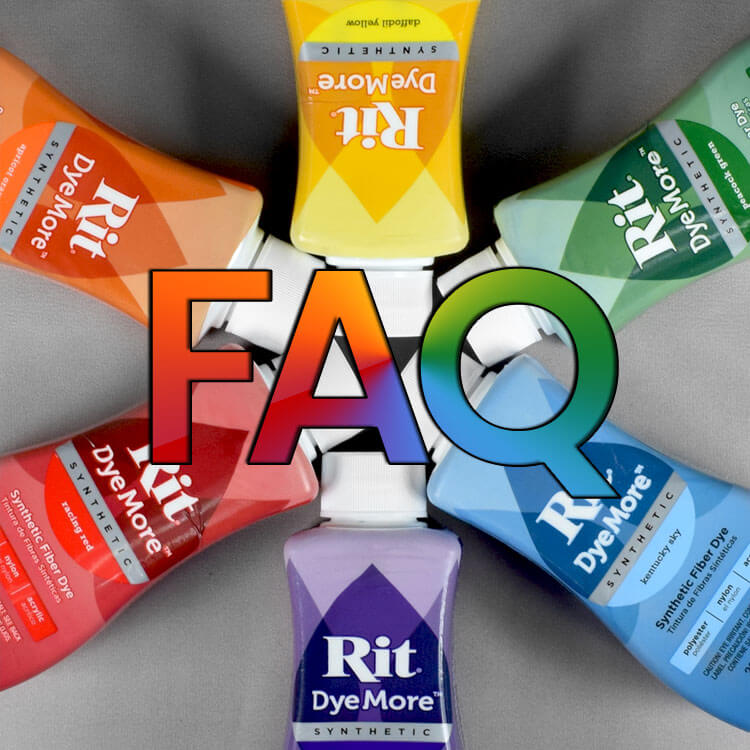When do you use All Purpose or DyeMore?
- Use Rit All Purpose Dye on cotton, wool, silk, nylon and rayon fabrics
- Use Dye More on polyester, acrylic and acetate
What temperature water do you use?
- For natural fabrics 140 to 160 degrees, or as hot as the fabric will allow
- For 35% or more synthetic materials get the water to 180-220 degrees, so as close to boiling as possible. Your goal is to apply constant heat so use the stove top method for the best results.
Why do you use salt or vinegar? And when?
You use salt or vinegar to enhance the color of the dye.
- Add one cup of salt when dyeing fabrics containing cotton, rayon, ramie or linen
- Add one cup of vinegar when dyeing fabrics containing nylon, silk or wool
What are the hardest and easiest fabrics to dye?
Synthetic fabrics will be the hardest to dye. They require constant high heat and can still be very hard to achieve the desired results. Know that before you dye.
Also know that Rit will not dye fiberglass, spandex, and metallic fibers, fabrics with rubber backings, fabrics with special finishes, such as waterproof or stain resistant finishes, fabrics labeled washable only in cold water or dry clean only.
What can you use that is not a pot?
You could –
- Dye something in the washing machine
- This is the easiest way to dye. Rit has step by step directions on their site detailing how to dye the fabric and how to clean the machine afterwards. This is the best method for larger items because the dye really has the chance to penetrate the whole fabric.
- Use a kiddie pool
- it could get dyed too so be weary of that
Whatever you use, just clean it with bleach, soap and water afterwards.
How much should you dye at a time?
No more than can fit in the container comfortably so that when water is added it generously covers the fabric. You also want it to be able to move freely so that it dyes evenly.
How do I cut down on color bleeding?
- Use fixative
- Using fixative will cut down on color bleeding and also help the color be as rich as possible.
- When do you use fixative?
- You use fixative directly after dying, before washing of any kind.
- When do you use fixative?
- Using fixative will cut down on color bleeding and also help the color be as rich as possible.
Can you dye something that can't be washed afterwards?
Kind of. I do not recommend this method because it if not actually what this product is supposed to be use for but this is how I would do it.
Color perfect comes pre mixed with three applicators for the bottle. No water or dye baths required. Just apply the dye and wait for it to dry then add the color fixative.
The only catch is that you should wash out the color perfect after it is applied and if you are unable to do so it could run off onto other surfaces. So for something like a curtain you may decide that is okay but for a rug you might want to think twice about it.
Dye something dark a lighter color?
You can try using Rit Color Remover on fabrics that are not polyester, acetate, or acrylic. See our color remover tutorial for details about how to use it!

